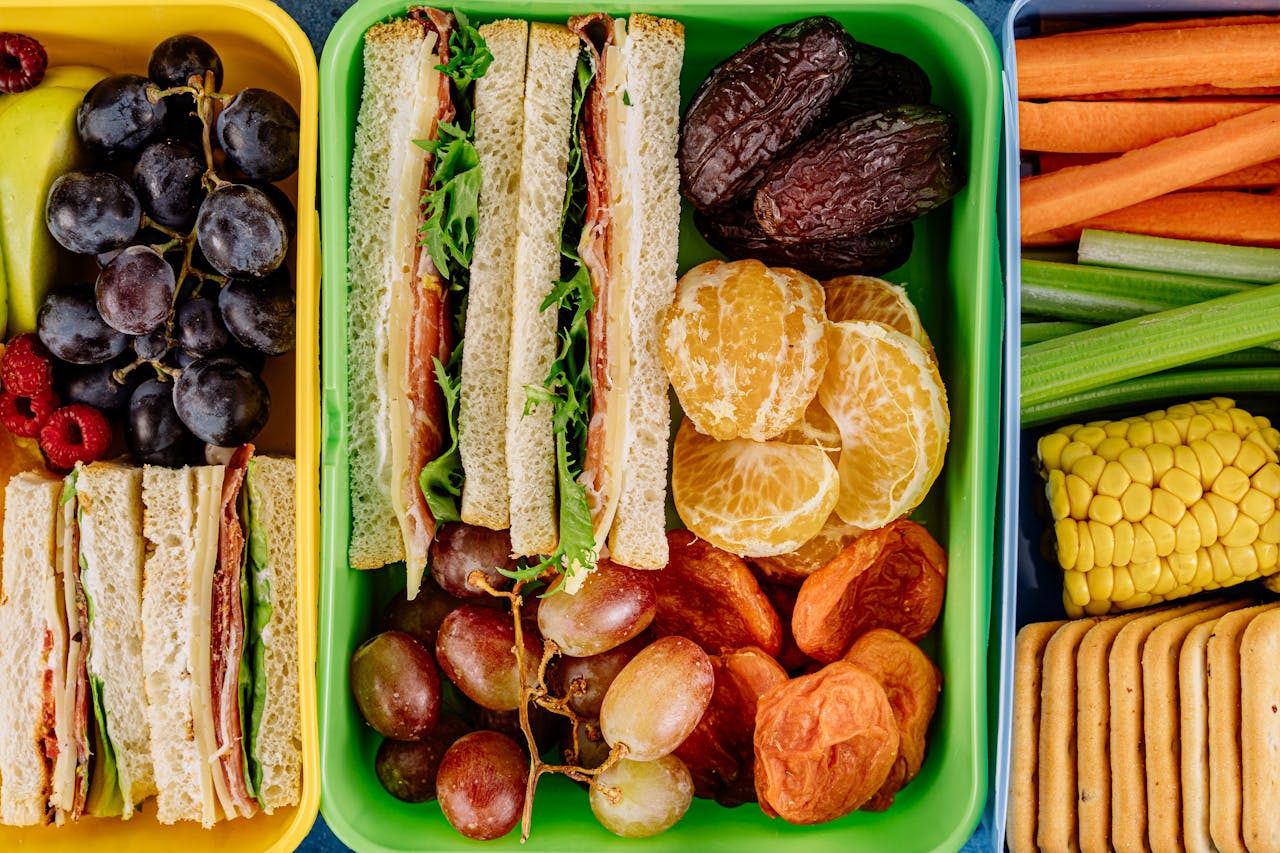In our fast‑paced world, finding time to eat well can feel like a luxury. Yet consistent, balanced nutrition is the cornerstone of energy, mood stability, and long‑term health. That’s where smart meal planning comes in. By dedicating a little time each week to mapping out your meals, you can reduce stress, save money, minimize food waste, and set yourself up for culinary success. This guide will walk you through why meal plans matter, explore different plan types, and share practical tips for creating and sticking to your personalized roadmap to better eating.
1. Why Meal Planning Matters
- Saves Time & Stress: Deciding “What’s for dinner?” every evening can be exhausting. A clear weekly plan eliminates daily guesswork and last‑minute scrambling.
- Controls Nutrition: When you craft your own menus, you choose nutrient‑dense ingredients, balanced macronutrients, and appropriate portions—tailoring meals precisely to your goals.
- Reduces Food Waste: Writing a specific grocery list based on planned recipes prevents overbuying and leftover spoilage.
- Saves Money: Bulk‑buying staple items and avoiding impulse purchases drives down grocery bills.
- Supports Health Goals: Whether you’re aiming for weight management, muscle gain, improved energy, or better blood sugar control, a targeted plan keeps you accountable and on track.
2. Common Meal‑Plan Styles
- Balanced Wellness Plans
Moderate in calories and macronutrients; emphasizes a variety of fruits, vegetables, lean proteins, whole grains, and healthy fats. Ideal for general health and steady energy. - Low‑Carb & Ketogenic Plans
Minimizes carbohydrates in favor of fats and proteins to promote fat burning, stabilize blood sugar, and support weight‑loss goals. - Plant‑Based & Vegan Plans
Focuses on legumes, whole grains, nuts, seeds, and nutrient‑packed produce—perfect for reducing saturated fat intake and boosting fiber. - Mediterranean Plans
Inspired by dietary patterns in the Mediterranean region; rich in olive oil, fish, whole grains, and fresh produce; linked to heart health and longevity. - Gluten‑Free Plans
Eliminates wheat, barley, and rye for those with celiac disease or gluten sensitivity; relies on naturally gluten‑free grains, fruits, vegetables, and lean proteins. - Performance Athlete Plans
Tailors carbohydrates around training sessions; emphasizes high‑quality protein for muscle repair and recovery, timed snacks, and hydration strategies. - Budget‑Friendly Plans
Centers on affordable staples like rice, beans, eggs, and seasonal produce; uses batch‑cooking and versatile recipes to stretch every dollar.
3. Step‑By‑Step: Crafting Your Weekly Meal Plan
- Assess Your Needs
- Determine daily calorie range based on activity level and goals.
- Identify any dietary restrictions (allergies, intolerances, or personal choices).
- Define your flavor preferences and cultural cuisines you enjoy.
- Choose Your Plan Template
- Select a meal‑plan style that aligns with your objectives (e.g., low‑carb, plant‑based).
- Decide on the number of meals and snacks per day (3 meals + 1–2 snacks is common).
- Gather Recipes & Build Your Menu
- Pick 3–4 breakfast options, 5–7 lunch/dinner recipes, and a handful of snacks.
- Rotate proteins, grains, and vegetables to maintain variety.
- Aim for colorful plates: strive for at least three different colors (vegetables, fruits, or grains) at each meal.
- Create a Consolidated Grocery List
- Group items by category (produce, dairy, meats, pantry).
- Note exact quantities to avoid waste.
- Identify versatile ingredients you can repurpose across multiple dishes (e.g., fresh herbs, beans, grains).
- Prep & Batch‑Cooking
- Reserve 1–2 hours on a weekend or evening for chopping veggies, cooking grains, or portioning snacks.
- Store prepped components in clear, labeled containers for grab‑and‑go convenience.
- Schedule & Accountability
- Post your weekly plan on the fridge or in a meal‑planning app.
- Set calendar reminders for prep sessions or grocery runs.
- Consider partnering with a friend to share recipe ideas and progress.
4. Tips for Long‑Term Adherence
- Build in Flex Days: Honor social events or cravings by leaving one day “open” for flexible eating.
- Swap Smartly: If an ingredient is unavailable or you crave variety, substitute within the same food group (e.g., swap broccoli for green beans).
- Spice It Up: Stock up on diverse spices and condiments; even small changes in seasoning can make familiar dishes feel new.
- Embrace Leftovers: Plan “Leftover Tuesdays” to repurpose Sunday’s roast chicken or weekend soups—saving time and money.
- Track Progress: Keep a simple food journal noting how meals make you feel; adjust the plan based on energy levels and satiety.
5. Sample 3‑Day Mini Plan
| Day | Breakfast | Lunch | Snack | Dinner |
|---|---|---|---|---|
| Mon | Spinach‑mushroom omelet + whole‑wheat toast | Quinoa chickpea salad with lemon‑herb dressing | Apple + almond butter | Baked salmon, brown rice, roasted asparagus |
| Tue | Overnight oats with chia & berries | Turkey‑lettuce wraps + carrot sticks | Greek yogurt + honey | Stir‑fry shrimp & veggies over cauliflower rice |
| Wed | Green smoothie (kale, apple, banana, flaxseed) | Lentil‑vegetable soup + side salad | Hummus + cucumber slices | One‑pan chicken fajitas w/ peppers & onions |
6. Leveraging Technology & Services
- Meal‑Planning Apps: Tools like MealMaster 7’s platform allow you to input preferences and receive fully customized weekly plans with dynamic grocery lists.
- Nutrition Trackers: Sync your meal plan to apps such as MyFitnessPal or Cronometer to monitor macronutrients and micronutrient intake.
- Grocery Delivery Integration: Connect your grocery list directly to online shopping services (e.g., Instacart, Amazon Fresh) for doorstep delivery.
- Virtual Consultations: Certified nutrition coaches can review your plan, suggest tweaks, and provide ongoing motivation.
7. Wrapping Up
Effective meal planning is more than simply jotting down recipes—it’s a strategic approach to nourishing your body, simplifying your week, and achieving lasting lifestyle change. By choosing a plan style that resonates, dedicating a small window for weekly prep, and embracing flexibility, you’ll transform your kitchen from a source of stress into a hub of nourishment. Ready to experience the power of personalized meal planning? Connect with MealMaster 7 today, and take the first step toward a healthier, happier you.
